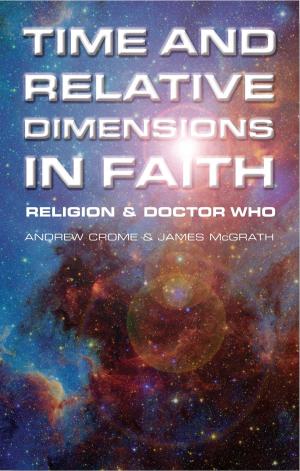A New Astronomy (Illustrated)
Nonfiction, Science & Nature, Science, Physics, Cosmology, Astronomy, Astrophysics & Space Science| Author: | David Todd Ph.D. | ISBN: | 1230000129596 |
| Publisher: | Todd | Publication: | May 3, 2013 |
| Imprint: | Language: | English |
| Author: | David Todd Ph.D. |
| ISBN: | 1230000129596 |
| Publisher: | Todd |
| Publication: | May 3, 2013 |
| Imprint: | |
| Language: | English |
Astronomy is the science pertaining to all the bodies of the heavens. Parent of the sciences, it is the most perfect and beautiful of all. Sir William Rowan Hamilton, the eminent mathematician, has called astronomy man's golden chain between the earth and the visible heaven. This noble science is to man a possession both old and ancestral, passing with resistless progress from simple shepherds of the Orient watching their flocks by night, to the rulers of ancient empires and the giants of modern thought; until to-day the civilized world is dotted with observatories equipped with a great variety of instruments for weighing and measuring and studying the celestial bodies, each of these observatories vying with the others in pure enthusiasm for new knowledge of the infinite spaces around us. Astronomy a Useful Science - Many devoted lives have been grandly spent in pursuit of this branch of learning; and it would hardly be possible for anyone who has given even a general glance at their unselfish history to make the vulgar inquiry, `What's the use?' Only a very small and unaspiring mind ever asks this question about any science which adds to the sum total of our actual knowledge, least of all with reference to this, one of the most practical of all sciences. Astronomy binds earth and heaven in so close a bond that it even maps the one by means of the other, and guides fleet and caravan over wastes of sea and sand otherwise trackless and impassable. By faithful study, even for a short time, it is possible to discover many of these uses. They may not at once appear to put money into men's pockets or clothes upon their backs; but we have passed the primitive stage of a rudely toiling community, where material progress alone is the thought and aim. The Constellations.- The names and positions of the brighter stars are very easy to remember. By even a casual glance at the sky on any clear night, it will be seen that the stars make all sorts of figures with one another, squares, triangles, half circles, and fanciful combinations may be traced in all directions. The ancients called these various figures after their gods and heroes, dividing them into 48 groups, largely named after the characters associated with the voyage of the fabled ship Argo. Although these constellations bear little real resemblance to the men, animals, and other objects named, they too are easily learned. Properly that is not astronomy, but merely geography of the heavens; yet it is an interesting and popular branch of knowledge, often leading to farther studies into the most absorbing and uplifting of sciences. The Moon. -Of all celestial bodies, meteors alone excepted, the moon is the nearest to us, and apparently of about the same size as the sun; but this is the result of a somewhat curious coincidence, by which the sun, although 400 times broader than the moon, is also very nearly 400 times farther away. Even with a small telescope we may generally see the deep craters and the rugged mountain peaks of the moon, partly illuminated by sunlight, while the rest of our satellite is turned away from the sun, lying in shadow and seen very faintly by the sunlight falling upon it after reflection from the earth. Our companion world is dead and cold, its air and water almost certainly gone, so that no amount of brightest sunshine can of itself bring back any warmth of life. Contents -The Language of Astronomy -The Philosophy of the Celestial Sphere -The Stars in their Courses -The Earth as a Globe -The Earth Turns on its Axis -The Earth Revolves Round the Sun -The Astronomy of Navigation -The Observatory and its Instruments -The Moon -The Sun -Eclipses of Sun and Moon -The Planets -Argument for Gravitation -Comets and Meteors -The Stars and the Cosmogony
Astronomy is the science pertaining to all the bodies of the heavens. Parent of the sciences, it is the most perfect and beautiful of all. Sir William Rowan Hamilton, the eminent mathematician, has called astronomy man's golden chain between the earth and the visible heaven. This noble science is to man a possession both old and ancestral, passing with resistless progress from simple shepherds of the Orient watching their flocks by night, to the rulers of ancient empires and the giants of modern thought; until to-day the civilized world is dotted with observatories equipped with a great variety of instruments for weighing and measuring and studying the celestial bodies, each of these observatories vying with the others in pure enthusiasm for new knowledge of the infinite spaces around us. Astronomy a Useful Science - Many devoted lives have been grandly spent in pursuit of this branch of learning; and it would hardly be possible for anyone who has given even a general glance at their unselfish history to make the vulgar inquiry, `What's the use?' Only a very small and unaspiring mind ever asks this question about any science which adds to the sum total of our actual knowledge, least of all with reference to this, one of the most practical of all sciences. Astronomy binds earth and heaven in so close a bond that it even maps the one by means of the other, and guides fleet and caravan over wastes of sea and sand otherwise trackless and impassable. By faithful study, even for a short time, it is possible to discover many of these uses. They may not at once appear to put money into men's pockets or clothes upon their backs; but we have passed the primitive stage of a rudely toiling community, where material progress alone is the thought and aim. The Constellations.- The names and positions of the brighter stars are very easy to remember. By even a casual glance at the sky on any clear night, it will be seen that the stars make all sorts of figures with one another, squares, triangles, half circles, and fanciful combinations may be traced in all directions. The ancients called these various figures after their gods and heroes, dividing them into 48 groups, largely named after the characters associated with the voyage of the fabled ship Argo. Although these constellations bear little real resemblance to the men, animals, and other objects named, they too are easily learned. Properly that is not astronomy, but merely geography of the heavens; yet it is an interesting and popular branch of knowledge, often leading to farther studies into the most absorbing and uplifting of sciences. The Moon. -Of all celestial bodies, meteors alone excepted, the moon is the nearest to us, and apparently of about the same size as the sun; but this is the result of a somewhat curious coincidence, by which the sun, although 400 times broader than the moon, is also very nearly 400 times farther away. Even with a small telescope we may generally see the deep craters and the rugged mountain peaks of the moon, partly illuminated by sunlight, while the rest of our satellite is turned away from the sun, lying in shadow and seen very faintly by the sunlight falling upon it after reflection from the earth. Our companion world is dead and cold, its air and water almost certainly gone, so that no amount of brightest sunshine can of itself bring back any warmth of life. Contents -The Language of Astronomy -The Philosophy of the Celestial Sphere -The Stars in their Courses -The Earth as a Globe -The Earth Turns on its Axis -The Earth Revolves Round the Sun -The Astronomy of Navigation -The Observatory and its Instruments -The Moon -The Sun -Eclipses of Sun and Moon -The Planets -Argument for Gravitation -Comets and Meteors -The Stars and the Cosmogony















